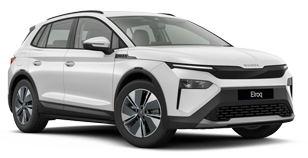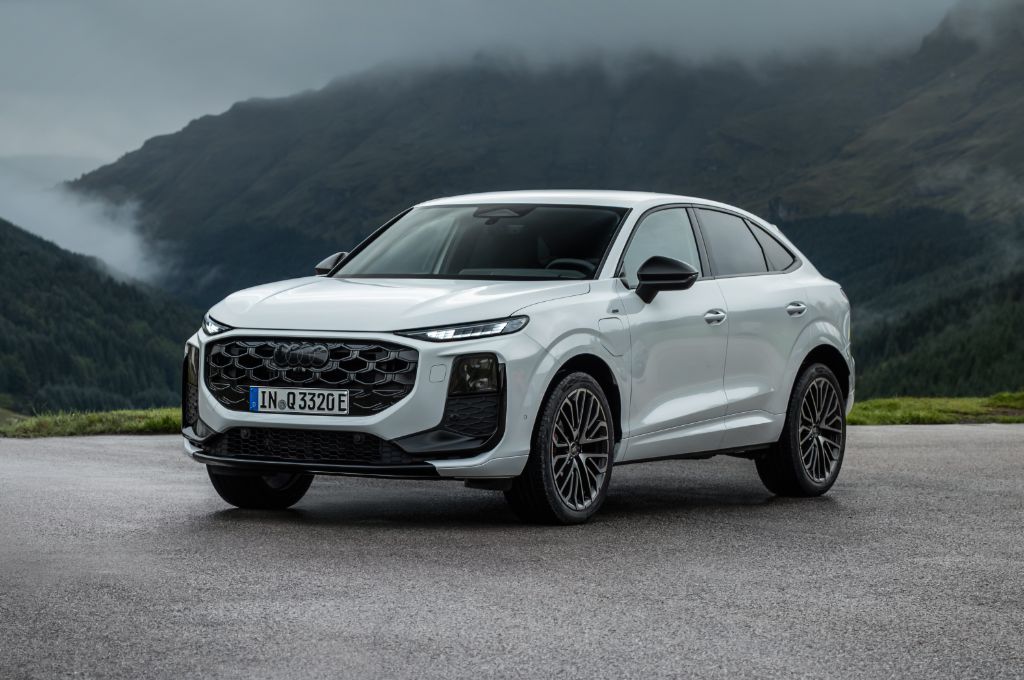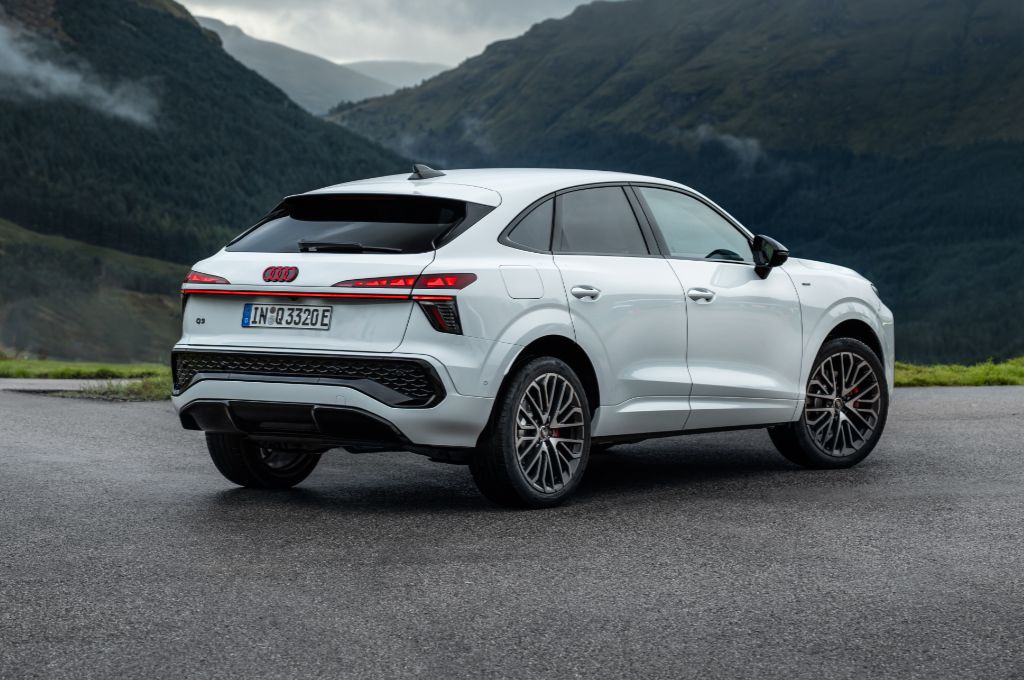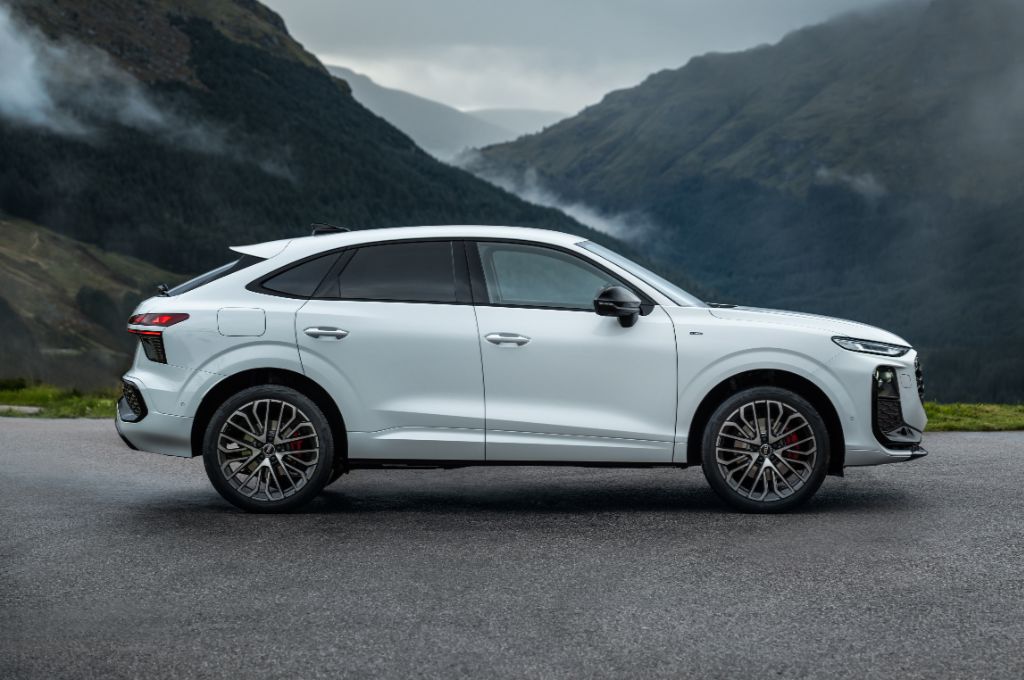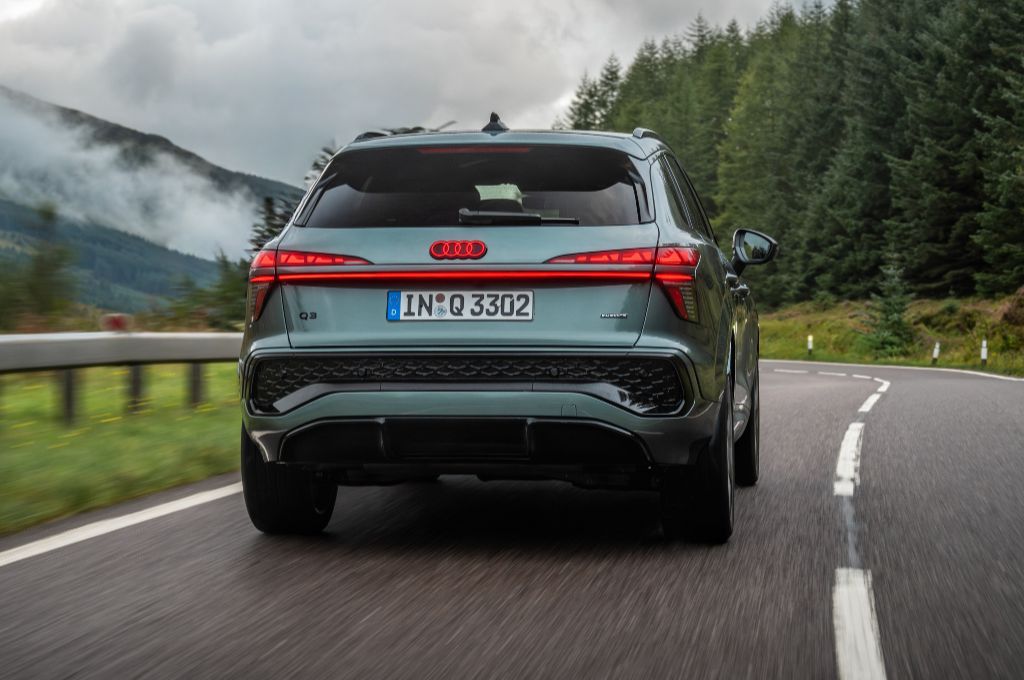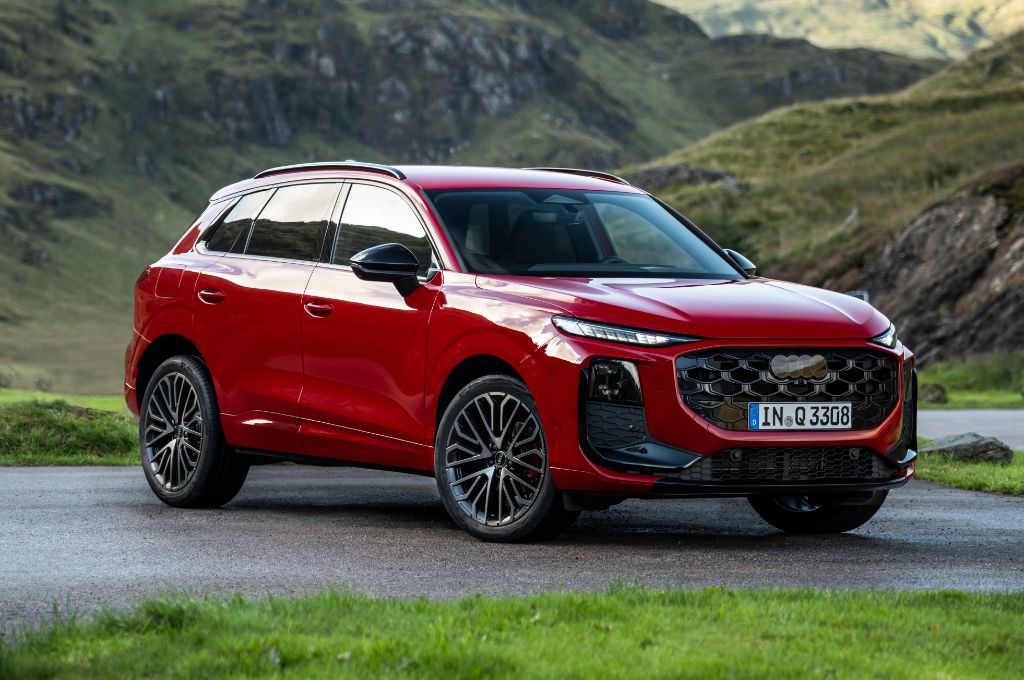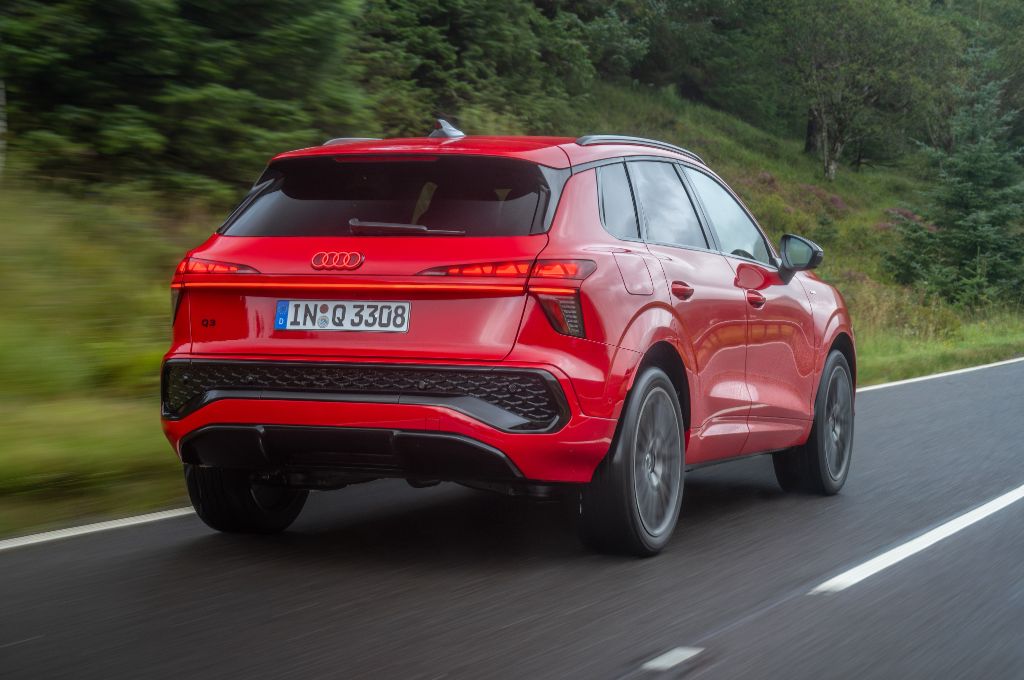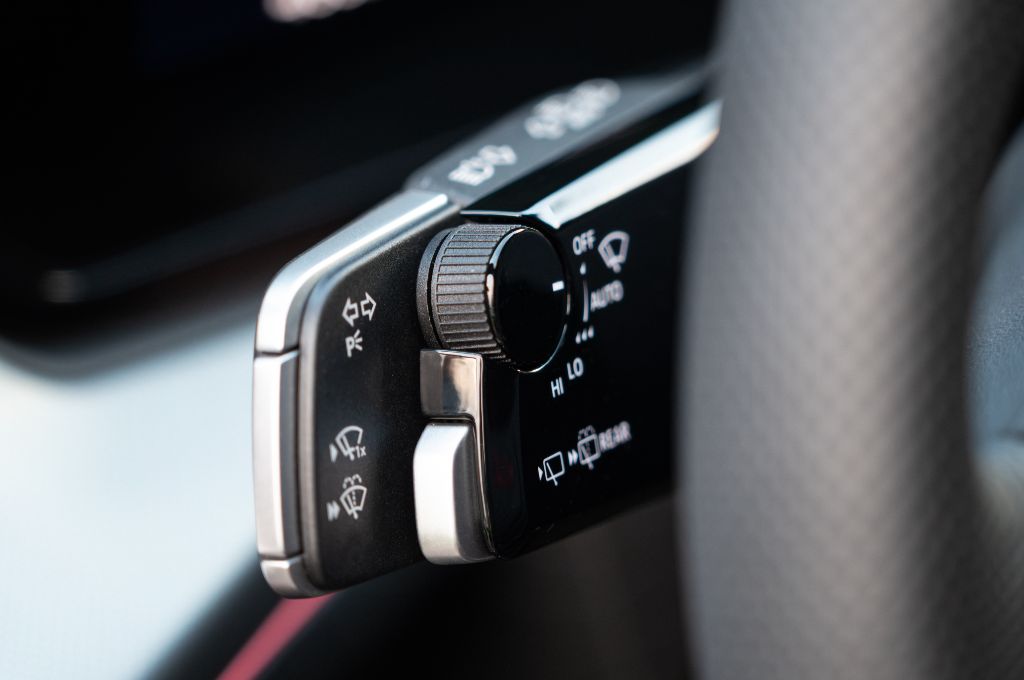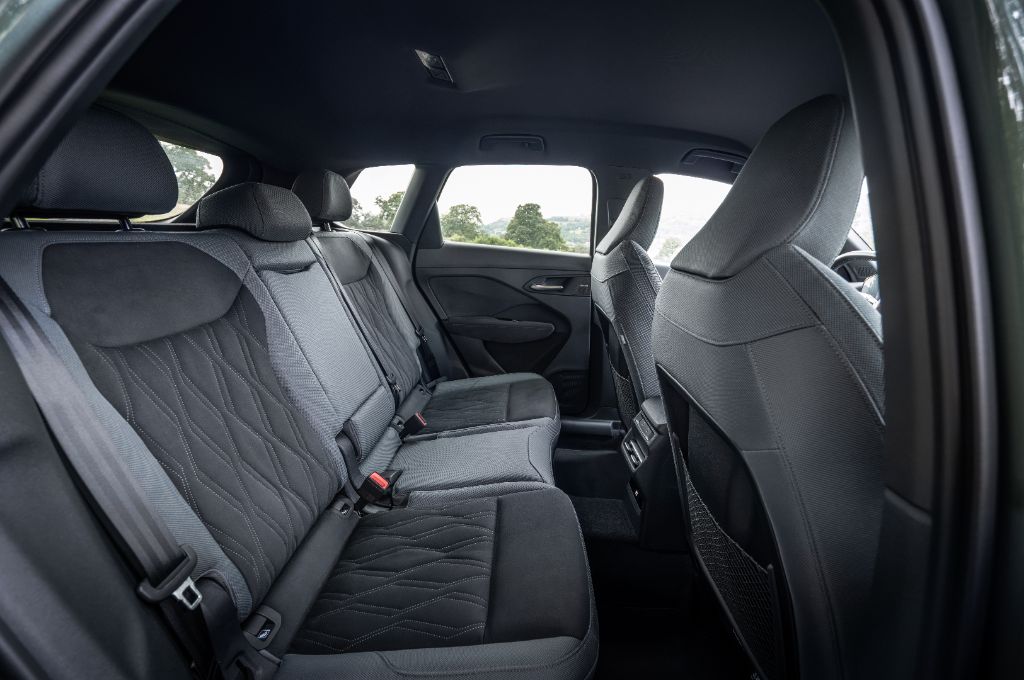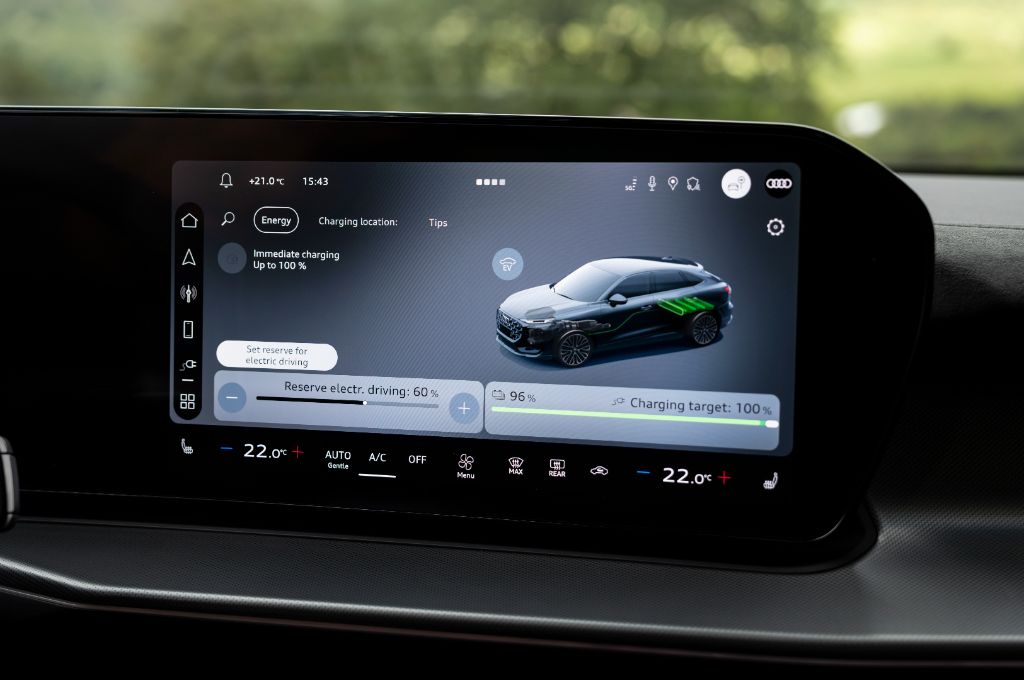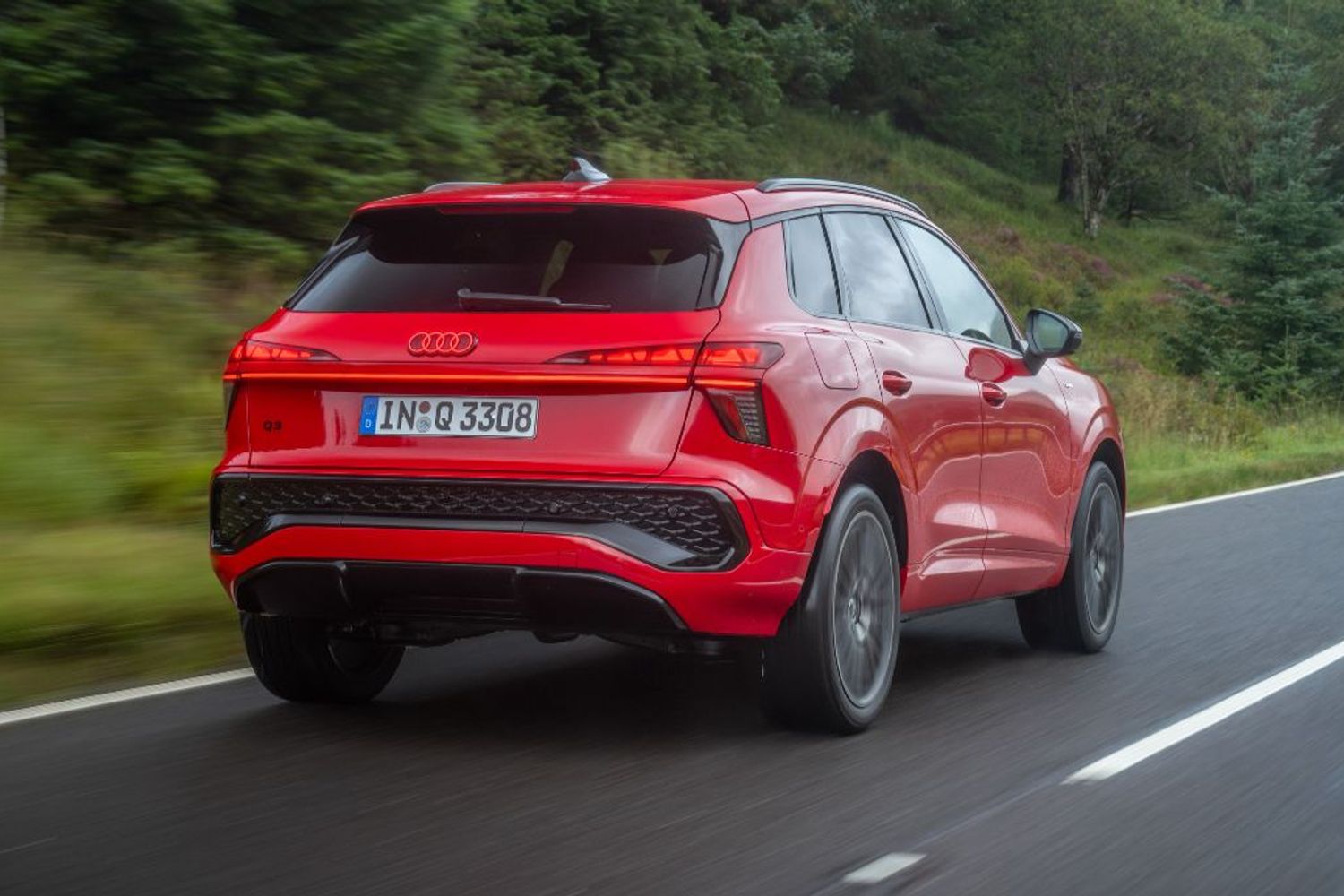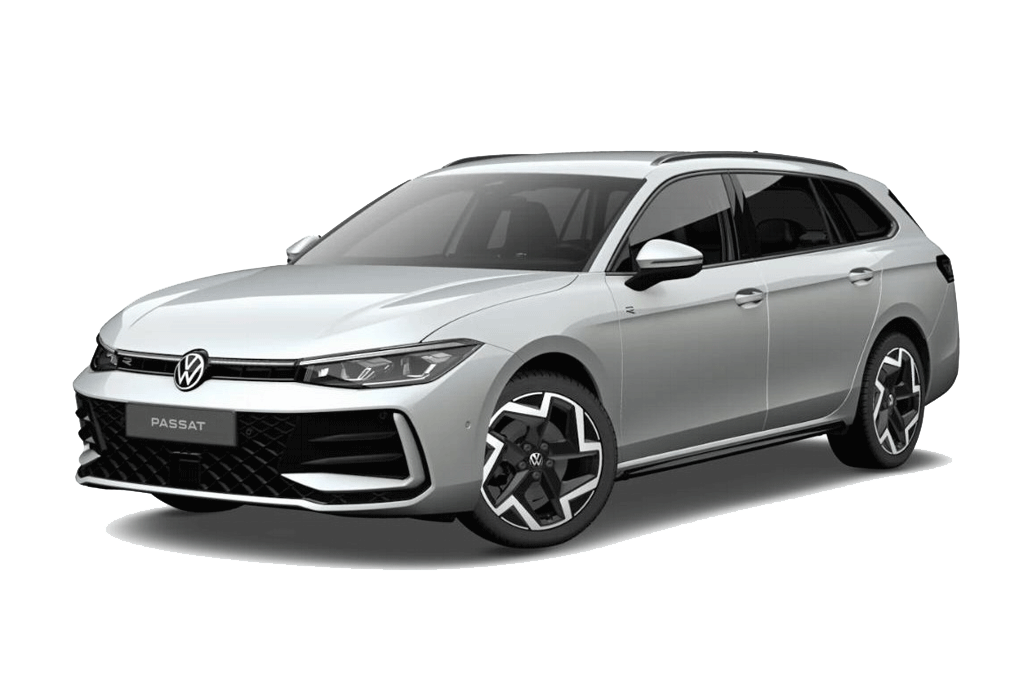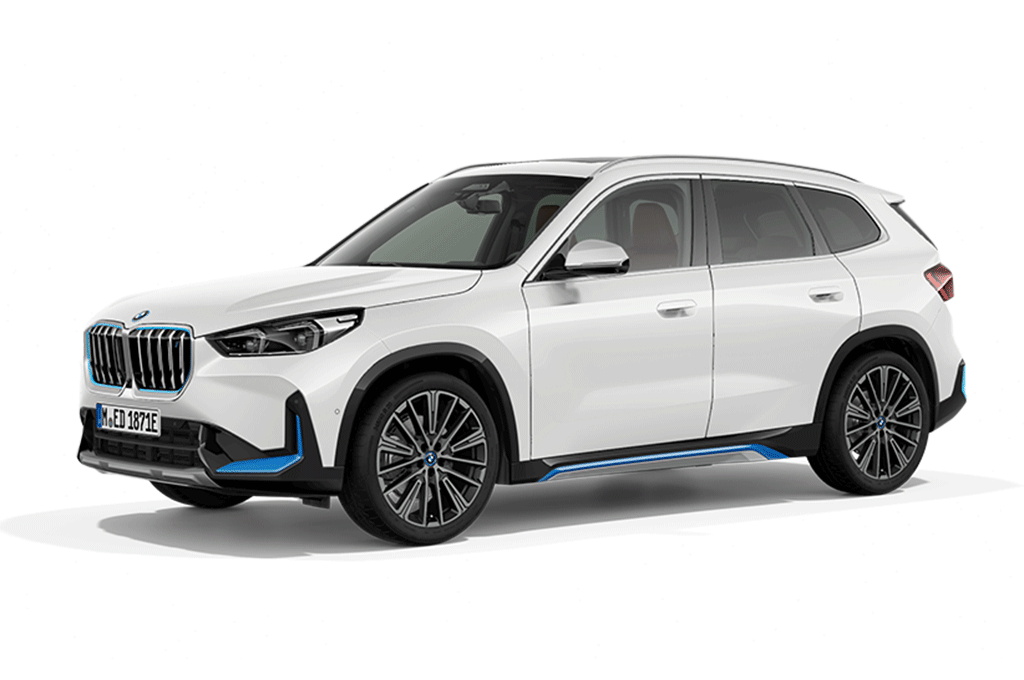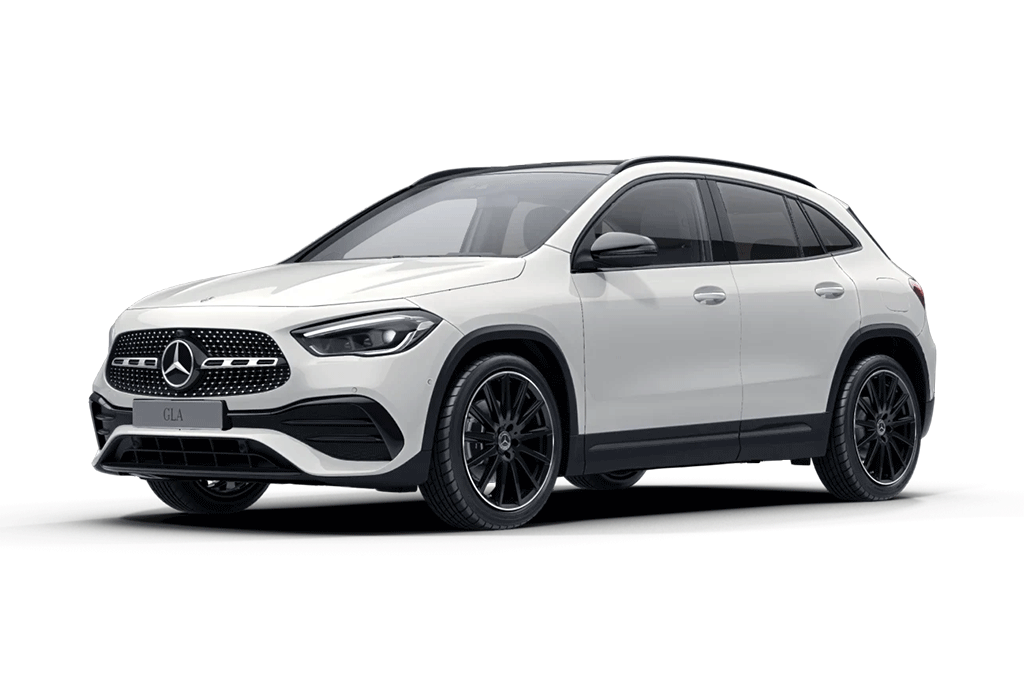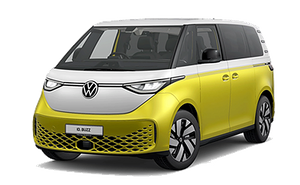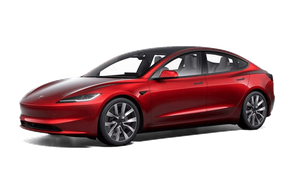Introduction
The Audi Q3 has long been a favourite in the premium compact SUV class, going head-to-head with rivals like the BMW X1, Mercedes GLA and Volvo XC40. This new, third-generation model is no different, offering a wide spread of engines to suit different buyers. The range starts with a 1.5-litre 148bhp petrol with clever cylinder deactivation technology, before stepping up to 2.0-litre petrols with 201bhp or 261bhp and quattro all-wheel drive. There’s even a 148bhp 2.0 TDI diesel for those still loyal to the long-legged efficiency of diesel power.
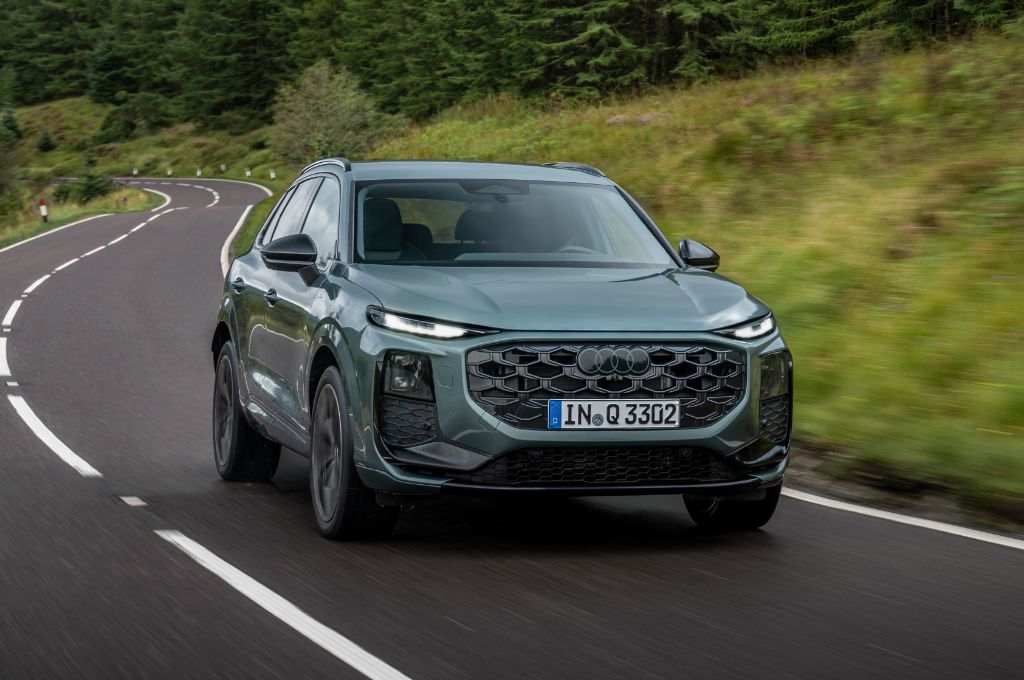
But it’s the plug-in hybrid Audi Q3 e-Hybrid that’s of real interest to us at Electrifying, of course. We're all about the power of plugging in, after all! Combining the 1.5-litre petrol engine with an electric motor and a 19.7kWh battery, it promises up to 73 miles of pure electric driving – class-leading for a premium plug-in SUV. Add in DC rapid charging capability and generous standard kit, and it shapes up as one of the most compelling versions of the Q3, especially for company car buyers.
Range and Charging
Audi has equipped the Q3 e-hybrid with one of the largest batteries in its class; the lithium-ion NMC pack gets a usable capacity of 19.7kWh (or 25.7kWh total battery capacity). The result is an official electric-only range of up to 73 miles, which comfortably outdistances plug-in hybrid Mercedes GLA. BMW X1 and Lexus NX that are the Q3 PHEV's closest rivals. In everyday use, you’re more likely to see between 50- and 60-miles depending on conditions, which is still an impressive figure and enough to cover most commutes without troubling the petrol engine.
Find a used Audi on Electrifying.com
The 2026 Audi Q3 e-hybrid PHEV also comes with 50kW DC rapid charging as standard, which is unusual among plug-in hybrids and allows a 10–80% charge in under half an hour but is increasingly useful with bigger battery PHEVs like the Q3. Even so, most Q3 e-hybrid owners will more routinely rely on a 7kW home charger, which will take around four hours for a full charge from empty. You can also choose to hold or save battery charge for later in the journey, which is useful if you want to run on petrol power at higher motorway speeds before switching to electric power when you're in town.
The CCS and Type 2 charging sockets are compatible with the vast majority of car chargers, whether you're plugging-in at home or at a public charger. The socket is located on the front wing of the car, which I find less convenient than having it at the back of the car as I prefer reversing into spaces. You might feel differently, though!

Practicality and Boot Space
Practicality is one area where the Q3 e-Hybrid makes a compromise over the standard petrol- and diesel models. While the standard Q3 offers between 488- and 575 litres of boot space depending on the position of the sliding rear seats, the plug-in hybrid loses out because of its battery packaging. Boot capacity drops to 375 litres, and you lose the sliding rear bench altogether. The boot is still fine for the weekly shop or a few cabin bags, but it might not be so ideal for your golf clubs or a chunky buggy, so make sure that the Q3 PHEV will suit your needs in terms of boot space.
Space for passengers is less affected. Rear seat occupants enjoy decent headroom and legroom. Families who want outright practicality may prefer to step up to the larger Audi Q5, or you can look to similarly-priced but less premium alternatives like the Passat plug-in hybrid, which is a bigger car that gets a lot of the same tech as the Q3 - including a very decent electric range - as well as a much bigger boot.
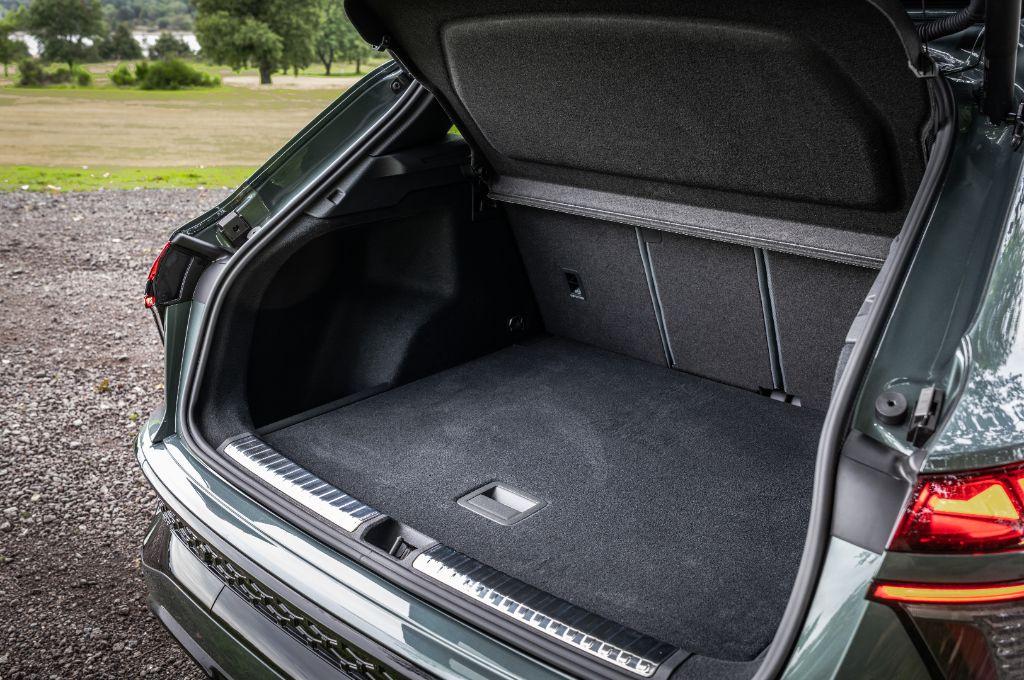
Interior and Infotainment
Audi interiors rarely disappoint, and the Q3 e-Hybrid is no exception. The materials look smart and are tactile, and the new infotainment - which curves towards the driver - together with the raised centre console gives a sense of a very driver-focussed cockpit. It doesn't feel terribly spacious, so if you're expecting it to feel very roomy thanks to the SUV body shape, you might be disappointed. The Hyundai Tucson and Kia Sportage feel usefully roomier inside and are a similar 4.5-metre length to the Audi Q3, so that's something to consider. A Tesla Model Y and Skoda Enyaq feel far bigger, and are more spacious throughout, too.
Still, the Q3's dashboard looks cool. The 'Virtual Cockpit' digital display behind the wheel has seriously impressive graphics and can be changed to show different layouts, and when you're behind the wheel you don't notice the peculiar amount of empty gloss black surround that it's housed in. The central touchscreen now houses the climate control, which is a bit annoying, but at least it's very responsive and the layout isn't oo difficult to get used to.
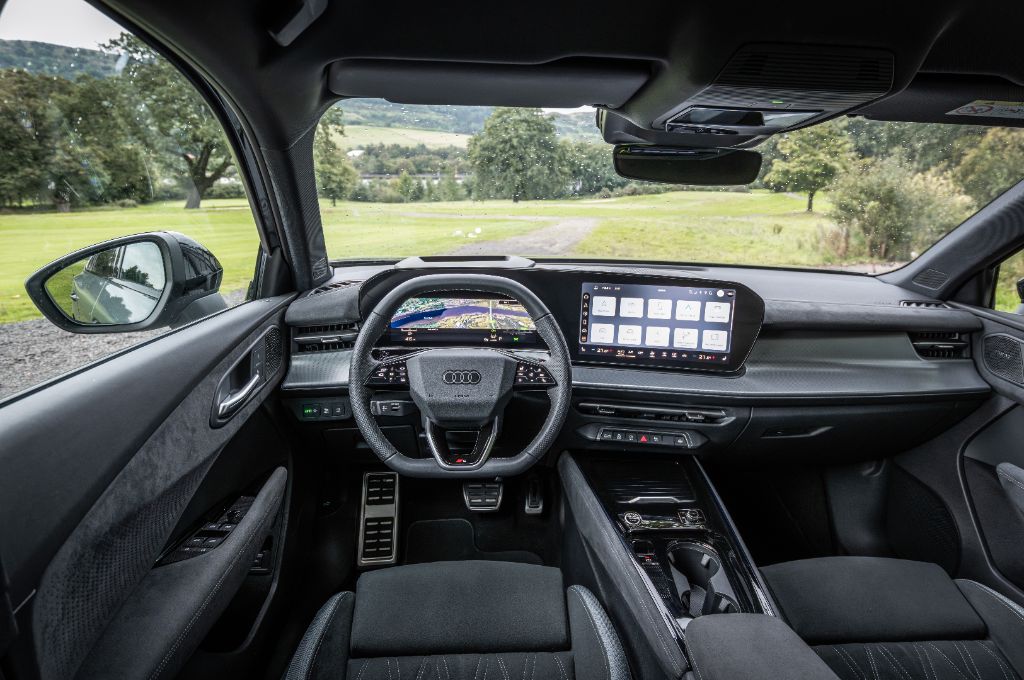
Conventional stalks have gone in favour of protruding buttons that actually function rather like... well, stalks. They look like buttons but you nudge them up or down to indicate, just like you would a conventional indicator stalk, so it's still pretty intuitive. Is it change for change's sake, rather than an actual improvement? Absolutely, but you won't find this as annoying as the buttons on the steering wheel in the Tesla Model 3.
Performance and Handling
The plug-in hybrid Q3 majors on refinement and smoothness rather than out-and-out sportiness. The transition between the 1.5-litre, turbocharged petrol engine and the 113bhp electric motor is fairly seamless, and when both work together the car delivers a healthy punch of acceleration that feels brisk enough for overtakes or motorway slip roads. As you'd expect of a car with a 0-62mph time of 6.8 seconds. You can even stick it into Sport mode, when you get snappier responses from the six-speed S tronic automatic transmission and a synthesised engine noise to make it all feel a bit rebellious and fun.
It steers with reasonable confidence, with light but predictable responses that make it feel wieldy around town but serene at a motorway cruise. There's no quattro four-wheel drive in the Q3 e-hybrid, unfortunately; it's front-wheel drive only.

Interestingly, the extra weight of the battery actually improves ride quality over scruffy surfaces compared with lighter, non-electrified petrol Q3 models. This comes with the caveat that I've only driven test cars fitted with the optional adaptive dampers, so I can only tell you that this pricey suspension offers a reasonable blend of comfort in everyday driving and tautness in Sport mode. I'd be tempted to stick with the entry-level Sport trim and its smaller alloy wheels, and skip the pricey optional dampers and 'progressive steering', which brings speed-variable steering response. It'll save you a lot of money!
The overall driving experience is composed, confidence-inspiring and very quiet in EV mode, although keen drivers will find that the BMW X1 still offers more engagement.
Running Costs and Pricing
Plug-in hybrids live or die by their efficiency, and the Q3 e-Hybrid excels in this regard. With its long electric range of up to 73 miles, many owners will find themselves covering the majority of their mileage on electric power alone, especially if they can charge regularly. Company car drivers will particularly benefit, as the low Benefit-in-Kind tax rate makes it a far cheaper option than petrol or diesel rivals.

Residual values should remain strong thanks to Audi’s brand appeal and the desirability of plug-in models, although buyers should keep in mind that more mainstream alternatives from Hyundai and Kia may be cheaper to buy and come with longer standard warranties.
Equipment levels are very good in the Audi Q3, and go a long way to justifying the higher price it commands over the less generously equipped BMW X1 plug-in hybrid. Even the entry-level Audi Q3 e-hybrid Sport gets 18-inch alloy wheels, LED headlights, a powered tailgate, heated and electrically adjustable front seats with lumbar adjustment, three-zone climate control, adaptive cruise control, and a 360-degree parking camera. S line is all about looking sportier, with larger 19-inch alloy wheels, privacy glass, illuminated rear Audi badge (which I think looks pretty terrible, to be honest.... sorry, Audi!), extended ambient lighting and tweaked cabin trim.
At the top of the range, the Edition 1 adds 20-inch alloys, sports suspension and advanced Matrix LED headlights that will beam lane-keep assistance guidance onto the road, tell you if there might be icy conditions and more. It's really clever lighting tech, which I have experienced on a brief night drive, but I can't help but feel that it's completely unnecessary given how many warnings and aids are already pinging up on the screens in the car. The Q3 is also just too expensive to recommend when it's in the Edition 1 trim, even with the fancy LED lights.
Every Q3 e-Hybrid comes with the Sound and Vision pack, which includes a Sonos premium audio system, head-up display and faster USB charging (features that are optional on the non electrified petrol- or diesel versions). All of which helps to justify the substantial premium that the Q3 plug-in hybrid commands over the rest of the range.
Verdict
The Audi Q3 e-Hybrid is arguably the best version of the Q3. It may not be the most practical model in the range and it isn’t the sharpest SUV to drive, but its combination of a class-leading electric range, rapid charging, generous standard specification and premium cabin appeal make it a very convincing package. For company car drivers or those who can charge regularly, it’s an easy recommendation. For families who prioritise maximum boot space, the compromises may be harder to justify. But for most buyers, this is the Q3 that really stands out.
Want all the latest electric car news, reviews and videos? Sign up to the Electrifying newsletter, and don't forget to check out the Electrifying podcast.





